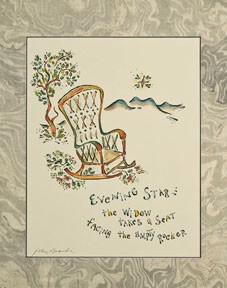 Haiku seems to be popping up all around me this summer and keeping me on track with my off-again-on-again practice of writing a haiku a day. Most of the ones I wrote through the end of July were about the lack of rainfall here in New Mexico & my very dry garden.
Haiku seems to be popping up all around me this summer and keeping me on track with my off-again-on-again practice of writing a haiku a day. Most of the ones I wrote through the end of July were about the lack of rainfall here in New Mexico & my very dry garden.
the sky grows dark.
thunder. lightning.
not a raindrop falls.
Once I got to Vermont, where it is very wet (rain every other day, and my sister’s house is surrounded by lakes and ponds), water became the recurring theme.
far across the lake
a loon’s cry.
cattails at attention.
While in Vermont, I attended a reading given by David Budbill, whose poetry is very haiku-like. Then last week I went to the opening of From a Distant Road, an exhibit at the Museum of New Mexico that includes John Brandi’s contemporary haiga (haiku poems accompanied by brush art work). That’s an example above, and click on it to see more of his pieces from the exhibit.
![]() Brandi gave a talk before the reception, introducing us to the history of haiga. But most interesting to me were his comments on his practice of writing haiku — that it was often about encapsulating an “aha” moment or that he sat outside and wrote about what was happening around him. I usually write at the end of the day and use it to reflect back on what took place that day, with my generally imperfect memory.
Brandi gave a talk before the reception, introducing us to the history of haiga. But most interesting to me were his comments on his practice of writing haiku — that it was often about encapsulating an “aha” moment or that he sat outside and wrote about what was happening around him. I usually write at the end of the day and use it to reflect back on what took place that day, with my generally imperfect memory.

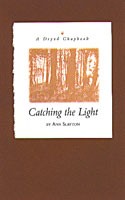
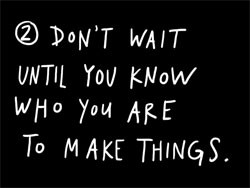
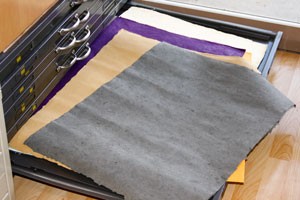 I’m back from Vermont and one of my first tasks is to tackle rearranging my studio. Or at least dealing with some of the boxes I haven’t unpacked since we moved. When packing my studio to move to Santa Fe, I got so overloaded with deciding what to keep and what to get rid of, I finally just put everything in boxes and brought it with me. There’s been so much to do to get our house set up, I’ve not unpacked several of those boxes. And the other day when I finally did, I got a pleasant surprise — a little roll of 2 sheets of handmade paper from
I’m back from Vermont and one of my first tasks is to tackle rearranging my studio. Or at least dealing with some of the boxes I haven’t unpacked since we moved. When packing my studio to move to Santa Fe, I got so overloaded with deciding what to keep and what to get rid of, I finally just put everything in boxes and brought it with me. There’s been so much to do to get our house set up, I’ve not unpacked several of those boxes. And the other day when I finally did, I got a pleasant surprise — a little roll of 2 sheets of handmade paper from 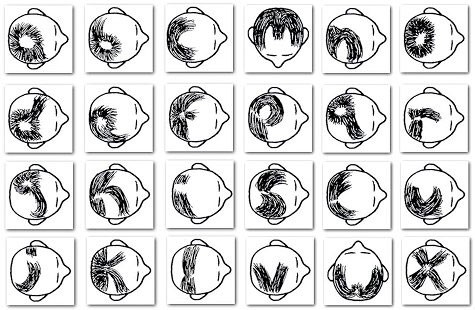
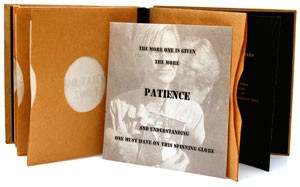 For the past week the news has been full of pieces about the upcoming 9/11 anniversary. Ten years ago I’d just started a year-long class on artist’s books at the
For the past week the news has been full of pieces about the upcoming 9/11 anniversary. Ten years ago I’d just started a year-long class on artist’s books at the